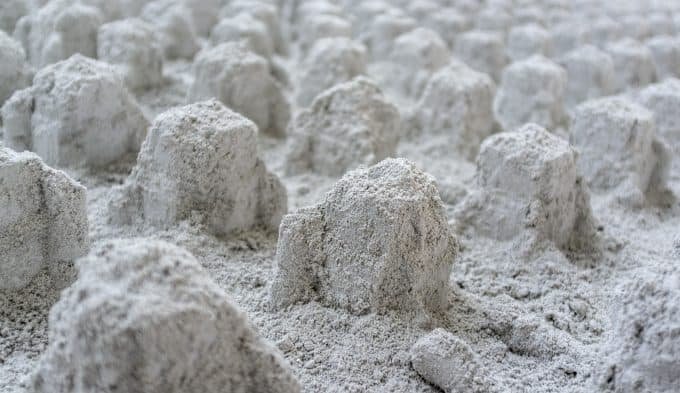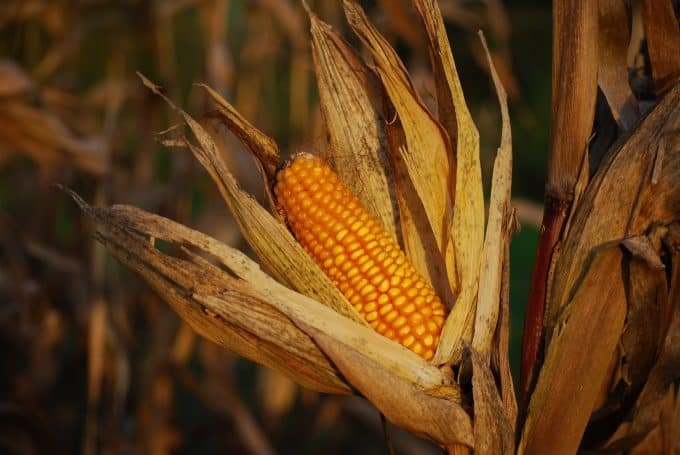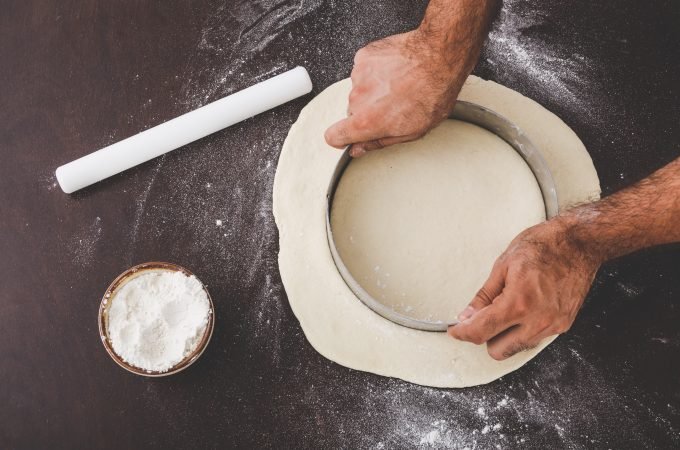Last Updated on October 9, 2020 by Dr Sharon Baisil MD
Introduction
Diseases are the bi-product of our lifestyle changes. There is an alarming sign that we see a lot of Diabetic patients around us, likewise other disease conditions also. Talking about diabetes, we cannot exclude the term, Glycemic Index.
In simple words, the Glycemic index can be explained as the measurement of glucose release after the intake of carbohydrate-containing food. In other words, it is a carbohydrate ranking based on its impact on blood glucose levels. This is necessary to determine the type of food taken on a daily basis.
Significance
The GI helps the health consultants, doctors, nutritionists to design a specialized menu for persons with diabetes or other specific illnesses. This allows them to include the necessary nutrients & also limiting disease-causing dietary factors.
As flours form the basic ingredients of breakfasts like pancakes, different breads, cakes, wraps, pizza & what not?
GI is a very efficient tool in understanding the safe intake of our favorite foods. In India, the southern part is more known to use rice flour & white flour-based or Maida recipes. This includes white rice flour or brown rice flour. Most of the traditional or authentic foods are flour-based like chapatti, rotis, naan, etc.
What about the rest of the world population? Pasta, noodles, spaghetti etc are members of the same flour family. In different parts of the world, people rely mostly on flour-based staple foods. For this reason, it is relevant to estimate the GI of food items more on a preventive basis. More & more studies are done as the food culture is changing day by day. People are interested in exploring the variety of foods, unlike olden days.
The food chains are also creating a great market for rising demands & to attract more & more customers. Health is always compromised for pleasure.
According to the Glycemic Index Foundation, there are roughly three classes:
For a full day diet, the glycemic indices are as follows;
Above 60 onwards, it is high. Range value of 46-59 is medium & last but not least, below 45 is low. According to other experts, 70-100, it’s categorized under high GI, 1-55 as low, 56-69 as middle range.
This makes the topic of discussion more clear. Let’s discuss some of the commonest flours. It is very important to know the uses of the flour when analyzing the glycemic index. The flour when undergone processing or when transformed into various food items, the glycemic indices also varies. So we have to be more aware of the processing or the end food product that finally goes to our stomach.
Soya flour–

The ground soya beans are a rich source of plant protein. It also contains dietary fiber, minerals as well as vitamins. This flour is used to thicken curries, & in baking to a wide extend. So many delicious dishes are prepared from the same. The Glycemic index is around 25 which falls in the low category, but there are possibilities for raising sugar levels.
This greatly depends upon the product we make out of the flour. This is very important for female health also. Soya is found to have phytoestrogens, which has cardiac protective properties. Usually for women, after menopause, it’s a good choice to include in their diet. As per the South African glycemic index foundation, the GI of soy flour is <20 for the I cup unit. The total carbohydrate is 16 grams. The net content is 10grams, this is for a half cup flour.
You can follow this diabetes foods and diet pdf to control your sugar levels
Click here to Get this eBook
Where to buy Soya flour?
You can buy good quality soya flour from this Amazon seller
Chickpea flour or Besan/ garbanzo flour–
Common flour we use daily. This is an abundant source of protein & plant fiber. The consistency itself defines the nutrient contents. It forms the main ingredient in snacks. Pizza crusts, nuggets or pakodas taste rich if made using chickpea flour. The flour is used in sauces & soups to thicken.
The glycemic index is around 44. As per SA GI Foundation, GI for 1 cup unit is <40 precisely. The total carbohydrate content is 34.1grams. The net content is 30.1grams for a half cup flour
Whole wheat flour–
It contains GI around 69, medium value. This contains fiber. It’s the main ingredient in cookies, pastries exclusively for diabetic persons.
It’s also the best substitute when making bread or rotis of any kind. This can be used as per your choice when planning your menu. It can give whole grain to your body, total carbohydrate is 54grams, and net content is 44grams for a half cup.
All-purpose flour–
It contains whole grain with a lot of protein & fiber content. The GI is relatively very high up to 85. It is white & used widely in baking muffins, cupcakes. It also contains a good amount of vitamins & minerals. It is always healthy to substitute some portion of whole wheat flour with all-purpose flour during baking or making Rotis.
White rice flour–
This flour is a common ingredient in South Indian cuisines. The breakfast menu mostly comprises of rice flour dishes. The GI is around 72, which is high. It contains carbohydrates mainly. Most commonly dosas or pancakes are the main recipes. There are also steamed rice cakes made with this flour. The GI for 1 cup unit is<40. The total carbohydrate is 63.3grams, net content being 62grams for a half cup.
Tapioca or cassava flour-
This is mainly used for thickening sauces & gravies. It’s also widely used as a coating in fried snacks because of its crunchiness. In South American cuisine, it’s used in preparing juices to enhance thick rich consistency.
The GI is around 67- in mid-range to high. It is used in baking to enhance softness. The total carbohydrate content is 56.4grams; net content is 54.2 grams for half cup flour. This can be a healthy choice when making steam cakes instead of using rice flour. We can make our favorite drinks by adding fresh fruits. Puddings are also another delicacy.
Brown rice flour–

It contains vitamins & minerals. The GI is in range of 62, middle range. For 1 cup unit contains GI <40. The total carbohydrate content is 60.4grams; net carbohydrate content is 56.8grams for half cup flour.
The golden brown color of the flour can be utilized effectively if used as baking flour for cupcakes along with the common flours. It contains an abundant amount of B vitamins & minerals. Rice cakes can be made by mixing more brown flour with less white flour. It gives a healthy & rich flavor.
Jowar or Sorghum flour–
The Glycemic index of Jowar is scientifically calculated as 62 for the whole sorghum floor & 64 for pearled sorghum. The burgundy sorghum flour is found to have GI – 66, & Whole grain White sorghum flour is found to have GI to a range of 70. It is free of gluten & contains large amounts of protein & fiber. This is used in baking in preparing crusts for pies, cakes, bread, etc.
Ragi /finger millet flour–
This is commonly known by the name millet flour. For 1 cup unit, the GI is <40. It is a powerhouse of vitamins & minerals with fiber. While other millets such as foxtail, little, finger & pearl fall in the range of 54- 68. It falls in the mid to high range.
Ragi flour when transformed or processed into different foods can elevate blood sugar. So it has to be taken with caution.
Factors affecting GI
The biological constitution of the person is a major factor. Every person’s biological responses differ to same foods. The consumption rate is another important parameter. The amount of food consumed at a particular time varies. The composition of nutrients in the food. The processing has undergone also has a great impact on GI. The glycemic index is directly related to the net carbohydrate content & fiber content. Higher carb- low fiber-high GI.
Can you believe this?
Now let’s see something very interesting. GI value Zero is something that we look forward. Introducing some flours with GI, zero. They are Flaxseed, Walnut flour, and Almond flour
Flours like walnut & almond flour are high in plant fiber & recommended when you initiate a meal menu for weight management or diabetes. These can be used in baking, pancakes, or in salads to add crunchiness without fear. They have good lipids or fats. They are expensive though.
Flaxseed flour is a reservoir of good fat. They enhance the beauty in a person by strengthening nails, complexion to the skin enhances hair growth too.
Oat flour–
These are made by crushing oats in a blender. Its mainly used in cookies, oats dosa, pancakes, oat nuggets with veggies, or minced (ground) meat. Normally it’s taken in a grain form as a drink or as porridge.
But you can also make these delicious items with oat flour. Substituting oat flour is yet another choice for baking making it double crunchy. It has a safe GI of 44 with total carb- 34grams & net carb-30grams- half cup. It is highly recommended flour as a meal planner & also for the disease-specific menu.
Coconut flour–
It has become common nowadays, due to the availability in local stores & markets. It has a low GI of 51 with total carb being 38grams& net carb 28grams. Researches prove that it is ideal for diabetes.
Once in a while try coconut flour for some amazing recipes, you won’t regret it. The flavor is so unique as well as delicious. Unlike other flours, it possesses a good aroma & economical also. Don’t forget to add to your healthy menu from today!
Corn flour–

This is the fine ground corn with bran & endosperms, containing good fiber in flours. They contain GI 70; can be categorized under the middle range, closer to higher. A lot of healthy recipes are made by adding other ingredients.
In Latin American countries, they make snacks out of it. They are steamed to make delicious cakes wrapped in corn leaves known as humitas flavored with raisins & nuts. They blend corn & make a batter to make healthy pancakes also. Sometimes they stuff vegetables or meat within the steamed cakes. These are unique delicacies that we can try out & treat others.
Barley flour–
Barley whole grain is a common cereal. Flour is made by grinding the grain. The GI lies between 53-66- middle range. It contains 55grams total carb & 48grams net carb. This can be used as base flour for making rolls, cakes, and sheets.
This also can be an alternative to the common flours we use today for baking our favorite foods. This is very effective to increase urinary output & hence to remove fluid retention in our body. In short, it clears the channels of the body by enhancing waste removal. So if you love to be healthy, add this to your menu from today.
Semolina flour–
The GI value is 44, which is in low range. It has a total carb 61 grams & net carb of 57grams. The yellow color of the flour itself makes it attractive. It can be used as pizza crusts or crusts for pies. Healthy desserts can also be made by adding your favorite fruits & nuts. Pancakes are also healthy choices.
Crunch bars topped with dried apricots or nuts are the best breakfast choices. These are some of the practical ways in which you can include such healthy ingredients to your daily menu.
Flours when transformed into sourdough reduce the Glycemic index. This method is more reliable for healthy baking
Conclusion
All these flour with the glycemic index values gives us better know-how of how much sugar goes into our body. This analysis has to be made to adjust or tailor our food habits & reduce the chance of any forthcoming diseases. All these flours form the common ingredient of our daily foods either in the form of breakfast or lunch or snacks. The Glycemic index is very relevant when talking about Diabetes. Most of us wish to prevent or arrest the further progression of the existing disease. This simple information can give good insights for your healthy life.











Very Informative
Thank you Ramesh
Such useful informationon what foods are safe for Diabetics or Insulin Resistant persons especially for Indians overseas who don’t have information on Indian foods GI contents…thanks a ton doctor.
You are welcome, Deepa. I have written a detailed eBook on all the good and bad Indian foods for Diabetes. you can find it in this link: https://beatdiabetesapp.in/purchase-diabetes-ebook/
Hi Doctor this article was very informative thank you for publishing it.
I have a query : is it true that when Millets or any grain is made into flour it’s GI increase for eg. Bajra or pearl millet has a GI of 55 while the Bajra flour has a GI of 70 if yes what can one due to reduce the GI if one had to eat millet flour?
Awaiting your reply and thanking u
Hi Victor, I am glad that the post was helpful to you. The GI will increase considerably on converting any grains to the flour form, as the fibers are broken down, which results in faster absorption and a sudden increase in blood glucose levels. The workaround is to go for whole-grain flours, as well as using a salad or a vegetable curry along with that dish, to add more fiber to that meal, thereby delaying the rate of absorption.